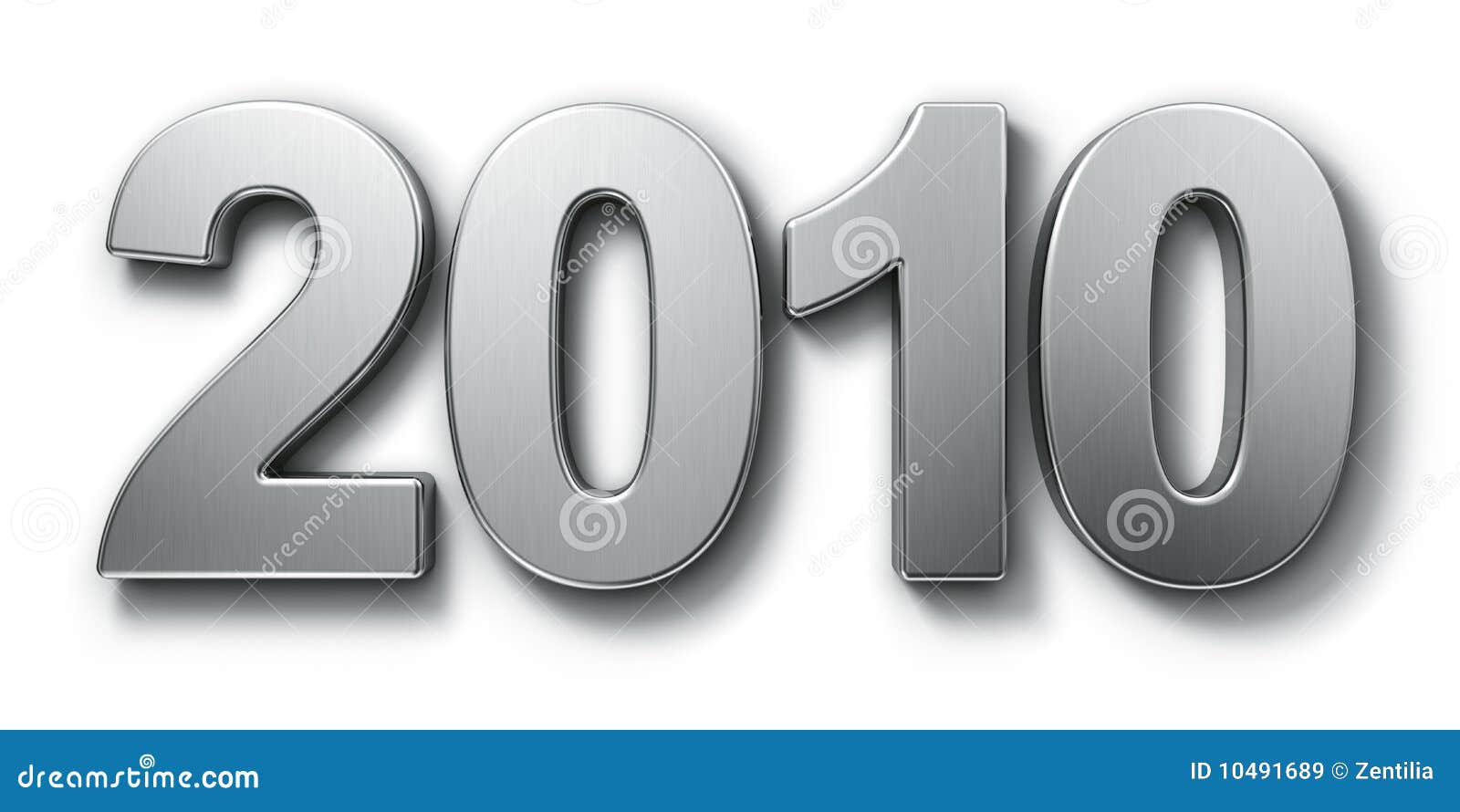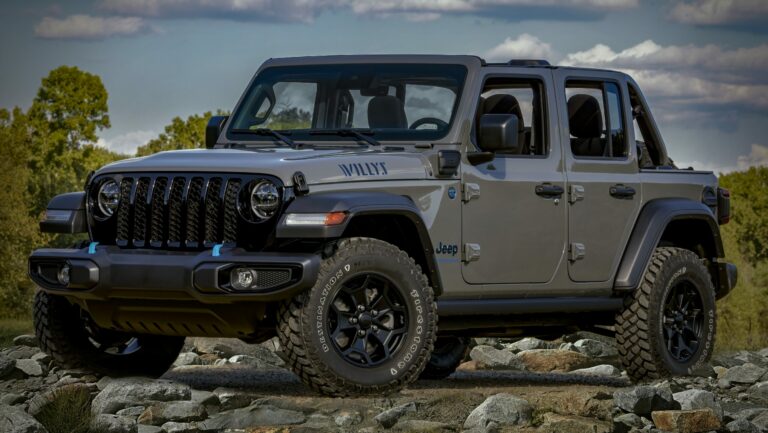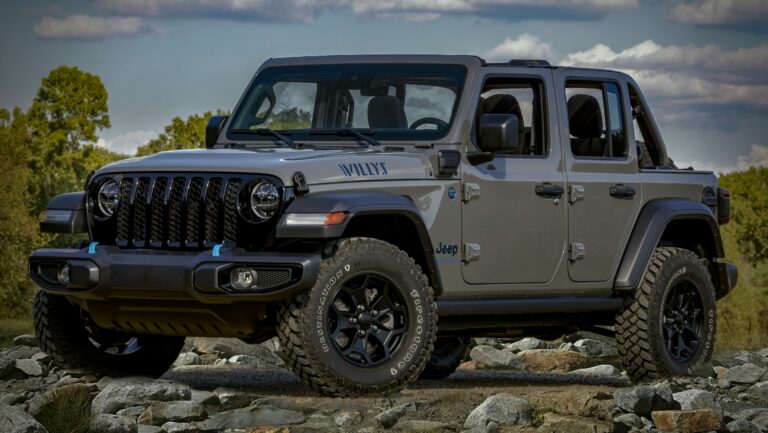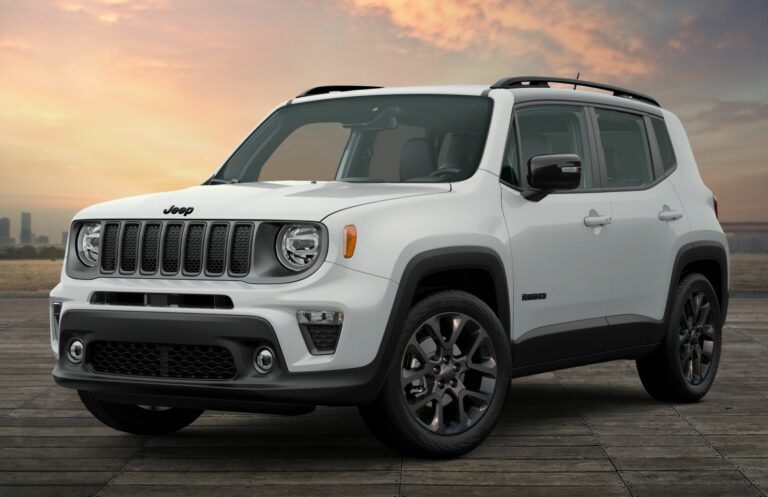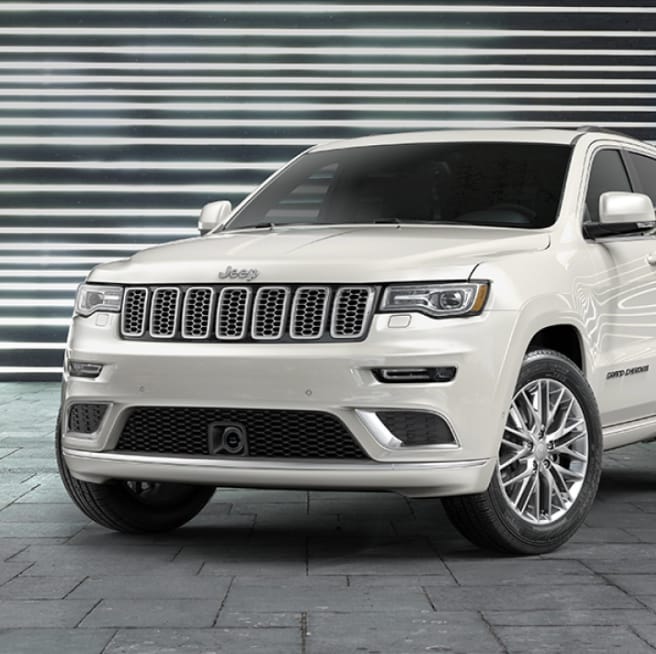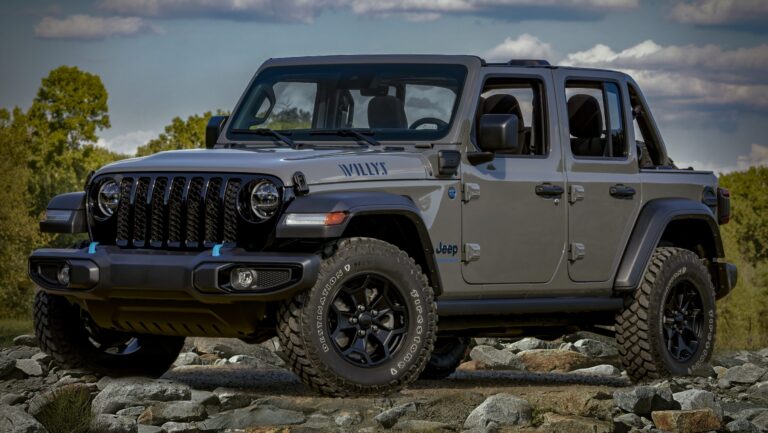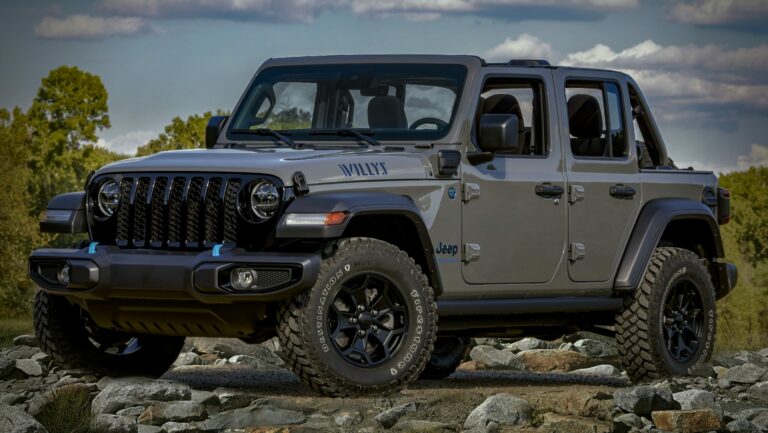The Power Untamed: Exploring 2010 SRT8 Jeep Horsepower and Beyond
The Power Untamed: Exploring 2010 SRT8 Jeep Horsepower and Beyond jeeps.truckstrend.com
The 2010 Jeep Grand Cherokee SRT8 stands as a testament to American performance engineering, a vehicle that boldly defied the conventional perception of an SUV. It wasn’t just a family hauler; it was a pavement-pounding beast designed to humble sports cars. At the heart of its formidable reputation lies its horsepower, a figure that captivated enthusiasts and set a new benchmark for high-performance utility vehicles. This article delves deep into the world of the 2010 SRT8 Jeep’s horsepower, exploring its impressive stock output, the allure of significant upgrades, the pathways to achieving mind-boggling power figures, and the essential considerations for anyone looking to unlock its full potential.
The Heart of the Beast: Stock Horsepower of the 2010 SRT8 Jeep
The Power Untamed: Exploring 2010 SRT8 Jeep Horsepower and Beyond
From the factory, the 2010 Jeep Grand Cherokee SRT8 was equipped with the legendary 6.1-liter HEMI V8 engine. This naturally aspirated powerhouse was a marvel of its time, specifically engineered by Chrysler’s Street and Racing Technology (SRT) division to deliver exhilarating performance.
The official horsepower rating for the 2010 SRT8 Jeep was 420 horsepower at 6,200 RPM, complemented by an equally robust 420 lb-ft of torque at 4,800 RPM. These figures, while seemingly modest by today’s standards compared to modern supercharged SRT offerings, were groundbreaking for an SUV in its era. Mated to a robust five-speed automatic transmission (W5A580) and a sophisticated all-wheel-drive system, this power enabled the 2010 SRT8 to rocket from 0 to 60 mph in a blistering 4.6 seconds and complete the quarter-mile in the low 13-second range.
What made these numbers particularly impressive was their application in a vehicle weighing over 4,800 pounds. The 6.1L HEMI was known for its broad powerband, delivering usable torque across the RPM range, making it not just fast in a straight line but also incredibly responsive in everyday driving scenarios. Its distinct exhaust note, combined with its aggressive styling, further solidified its status as a performance icon.
Why Pursue More Horsepower? The Allure of SRT8 Tuning
Despite its impressive stock performance, the 2010 SRT8 Jeep quickly became a favorite among performance enthusiasts for its untapped potential. The robust architecture of the 6.1L HEMI engine, combined with a thriving aftermarket, created a fertile ground for power upgrades. But why do owners seek to push these vehicles beyond their factory specifications?
The reasons are manifold:
- Adrenaline Rush: The thrill of even greater acceleration and top-end speed is a powerful motivator.
- Track Performance: For those who take their SRT8s to the drag strip or road course, more horsepower translates directly into faster lap times and quarter-mile runs.
- Street Credibility: Owning and driving a uniquely powerful SUV commands attention and respect.
- Personalization & Challenge: For many, the process of modifying and tuning a vehicle is a rewarding hobby, a test of mechanical aptitude and a quest for engineering perfection.
- Keeping Up: As newer, more powerful SUVs hit the market, upgrading an older SRT8 allows it to remain competitive or even surpass current offerings.


The 6.1L HEMI, with its forged crankshaft and sturdy block, proved to be an excellent foundation for significant power increases, often capable of handling double its factory output with the right supporting modifications.
Pathways to Power: Common Horsepower Upgrades for the 2010 SRT8 Jeep
Unlocking more horsepower from your 2010 SRT8 Jeep involves a tiered approach, ranging from simple bolt-ons to complex forced induction systems. Each stage offers a different level of performance gain and requires varying levels of investment and expertise.
Tier 1: Entry-Level Bolt-ons (50-100 HP Gain)
These are typically the first modifications owners undertake, offering a noticeable bump in power and an enhanced driving experience without delving into the engine’s internals.
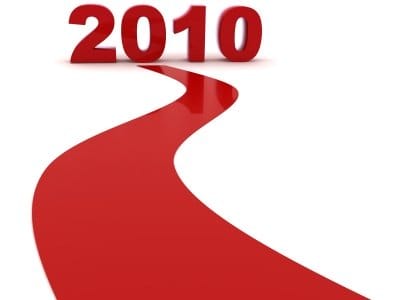
- Cold Air Intake (CAI): Replaces the restrictive factory airbox with a less restrictive system, allowing the engine to breathe more easily. (Est. Gain: 10-20 HP)
- Cat-Back Exhaust System: Reduces back pressure and improves exhaust flow, often resulting in a more aggressive sound. (Est. Gain: 15-25 HP)
- Long-Tube Headers: Optimizes exhaust scavenging, improving cylinder filling and exhaust flow. (Est. Gain: 20-30 HP)
- Larger Throttle Body: Allows more air into the intake manifold. (Est. Gain: 5-10 HP)
- Custom ECU Tune: The most crucial bolt-on. A professional tune optimizes fuel delivery, ignition timing, and transmission shift points to maximize gains from other modifications. (Est. Gain: 20-50+ HP, depending on other mods)
Tier 2: Internal Upgrades & Mild Forced Induction (100-300+ HP Gain)
This stage involves more significant modifications, often requiring removal of the engine or specific components.
- Camshaft Upgrade: A more aggressive camshaft profile changes valve lift and duration, allowing more air/fuel into and out of the cylinders. This dramatically changes the engine’s powerband. (Est. Gain: 40-80 HP)
- Cylinder Head Porting & Aftermarket Heads: Improving the airflow through the cylinder heads by porting or replacing them with higher-flow aftermarket units. (Est. Gain: 30-70 HP)
- Nitrous Oxide System (NOS): A temporary power boost by injecting nitrous oxide into the intake, providing a significant but short-duration horsepower increase. (Est. Gain: 75-200+ HP, depending on the shot size)
- Supercharger Kit (Low Boost): The most popular method for significant power gains. A supercharger forces more air into the engine, leading to substantial horsepower increases. (Est. Gain: 150-250 HP over stock)
Tier 3: Extreme Forced Induction & Engine Builds (400-800+ HP Gain)
Reaching the upper echelons of horsepower (e.g., 800 HP and beyond) requires comprehensive engine builds and sophisticated forced induction setups.
- High-Boost Supercharger/Turbocharger: Larger superchargers or twin-turbo systems pushing much higher boost pressures.
- Forged Internal Components: The stock pistons, connecting rods, and sometimes the crankshaft are replaced with stronger, forged aftermarket components to withstand extreme cylinder pressures.
- Fuel System Upgrades: High-volume fuel pumps, larger fuel lines, and high-flow fuel injectors are essential to supply enough fuel for massive power.
- Transmission & Drivetrain Reinforcement: The stock W5A580 transmission is robust but has limits. For 700+ HP, a built transmission (e.g., a heavily modified 5-speed or a conversion to an 8HP70/8HP90) and upgraded driveshafts, differentials, and axles become mandatory to prevent catastrophic failure.
- Cooling System Upgrades: Larger radiators, improved intercoolers, and auxiliary coolers are critical to manage the increased heat generated by high-horsepower engines.
- Custom Tuning & Engine Management: At this level, off-the-shelf tunes are insufficient. Highly specialized dyno tuning by an experienced professional is vital to ensure reliability and extract maximum power safely.
The Quest for 1000+ HP: Extreme Builds and Considerations
While the prompt mentions "1200 Hp" in the title, achieving 1000+ horsepower in a 2010 SRT8 Jeep is an exceptionally challenging and costly endeavor, pushing the boundaries of what’s practical for a street-driven vehicle. Such builds typically involve:
- Custom-built, fully forged stroker engines: Often increasing displacement (e.g., to 6.4L or 7.0L/426ci).
- Large twin-turbo setups or massive centrifugal superchargers: Capable of generating immense boost.
- Race-grade fuel systems: Possibly running E85 or race fuel.
- Highly specialized standalone engine management systems.
- Completely rebuilt, high-performance transmissions and drivelines: Often from companies like Paramount Performance or requiring custom fabrication.
- Extensive chassis reinforcement, braking upgrades, and suspension modifications to handle the power.
Reaching these extreme figures turns the SRT8 into a specialized, often track-focused machine. Reliability becomes a significant concern, requiring meticulous maintenance and a deep understanding of the vehicle’s limits. These projects are typically undertaken by highly experienced shops and enthusiasts with substantial budgets, easily running into the tens of thousands of dollars, if not more.
Important Considerations Before Upgrading Your SRT8’s HP
Embarking on a horsepower upgrade journey for your 2010 SRT8 Jeep is exciting, but it’s crucial to consider several factors to ensure a successful and satisfying outcome:
- Budget: Be realistic. Horsepower is expensive. Beyond parts, factor in labor costs for installation and, most importantly, professional tuning. Overlooking supporting modifications (brakes, cooling, drivetrain) can lead to catastrophic failures and higher costs down the line.
- Reliability vs. Power: There’s a direct trade-off. The more power you make, the more stress you put on every component. A 700 HP SRT8 might be reliable for spirited weekend drives, but a 1000 HP build will likely require more frequent maintenance and careful driving.
- Drivetrain Durability: The stock transmission, transfer case, driveshafts, and axles have limits. At higher power levels (especially beyond 600 HP), these components become the weakest link and will require upgrading.
- Fuel Economy: Expect a significant decrease in fuel efficiency, particularly with forced induction or larger engines.
- Emissions & Legality: Check local and state regulations regarding vehicle modifications. Some upgrades (e.g., cat-less exhausts, certain forced induction kits) may not be street legal in your area.
- Insurance: Inform your insurance provider about significant modifications. Failure to do so could result in denied claims in case of an accident.
- Finding Reputable Shops/Tuners: This is perhaps the most critical factor. A poor tune can destroy an engine quickly. Research, read reviews, and seek recommendations for shops specializing in HEMI performance and tuning.
Maintenance and Care for High-Horsepower SRT8 Jeeps
A modified, high-horsepower 2010 SRT8 Jeep requires a more rigorous maintenance schedule than a stock vehicle.
- More Frequent Oil Changes: High-performance engines run hotter and put more stress on lubricants. Use high-quality synthetic oil and consider shorter change intervals.
- Monitor Vital Signs: Install gauges for oil pressure, oil temperature, transmission temperature, and boost pressure (if applicable). Regularly monitor these to catch issues before they become critical.
- Regular Inspections: Frequently check for leaks, loose connections, worn belts, and unusual noises. Pay close attention to driveline components.
- High-Quality Fluids: Use premium gasoline (octane specified by your tuner), high-performance transmission fluid, and brake fluid.
- Tire & Brake Management: More power means faster wear on tires and brakes. Invest in high-performance tires and consider upgraded braking systems.
- Professional Check-ups: Regular visits to your performance shop for inspections and minor adjustments can prevent major problems.
Estimated Costs for 2010 Jeep Grand Cherokee SRT8 Horsepower Upgrades
Please note: These are estimated ranges and can vary widely based on parts brand, labor rates, geographical location, and the specific condition of your vehicle. Tuning costs are often separate from parts and installation.
| Upgrade Stage | Typical Components | Estimated HP Gain (Over Stock) | Estimated Cost Range (Parts & Labor) |
|---|---|---|---|
| Stage 1: Bolt-ons | Cold Air Intake, Cat-Back Exhaust, Long-Tube Headers, Custom ECU Tune | 50 – 100 HP | $2,500 – $6,000 |
| Stage 2: Mild Internal | Aggressive Camshaft, Ported Heads, Larger Throttle Body, Full Tune (on top of Stage 1) | 100 – 200 HP | $6,000 – $12,000 |
| Stage 3: Forced Induction | Supercharger Kit (low boost), Fuel System Upgrade, Full Tune (on top of Stage 1) | 150 – 250 HP | $10,000 – $18,000 |
| Stage 4: High-HP Forced Induction | High-Boost Supercharger/Twin Turbo Kit, Forged Engine Internals, Built Transmission, Full Fuel System, Full Tune | 300 – 600+ HP | $20,000 – $45,000+ |
| Stage 5: Extreme Build | Custom Stroker Engine, Race-Grade Forced Induction, Fully Built Drivetrain, Advanced EMS, Chassis Mods | 600 – 1000+ HP | $50,000 – $100,000+ |
- Note: Costs for supporting modifications like upgraded brakes, suspension, and specialized cooling are not fully included in these estimates and should be factored into your overall budget.
Frequently Asked Questions (FAQ) about 2010 SRT8 Jeep Horsepower
Q1: What is the stock horsepower of a 2010 Jeep Grand Cherokee SRT8?
A1: The 2010 SRT8 Jeep came from the factory with 420 horsepower and 420 lb-ft of torque from its 6.1-liter HEMI V8 engine.
Q2: How much horsepower can the 6.1L HEMI engine reliably handle without internal modifications?
A2: Generally, a stock 6.1L HEMI can reliably handle up to about 550-600 horsepower at the crank with proper tuning and supporting modifications (like fuel system upgrades for forced induction). Beyond that, internal components like pistons and connecting rods become the weak link.
Q3: What’s the best first modification for more horsepower on a 2010 SRT8?
A3: A custom ECU tune is often considered the best "first mod" as it optimizes the engine for any other bolt-ons and can even provide modest gains on a completely stock vehicle. Pairing it with a cold air intake and cat-back exhaust is a popular starting point.
Q4: Is it worth supercharging a 2010 SRT8 Jeep?
A4: For significant and consistent power gains, supercharging is highly effective and a popular choice. It transforms the vehicle’s performance. However, it’s a substantial investment and requires proper supporting modifications and professional tuning to be reliable.
Q5: How much does it cost to get 600 horsepower out of a 2010 SRT8?
A5: Achieving 600 horsepower typically involves a supercharger kit, fuel system upgrades, and a custom tune. The estimated cost for parts and labor can range from $10,000 to $18,000, depending on the specific kit and shop rates.
Q6: Will upgrading my SRT8’s horsepower affect my insurance?
A6: Yes, significant modifications, especially those that increase performance, can affect your insurance policy. It’s crucial to inform your insurance provider to ensure proper coverage in case of an accident or theft. Failure to disclose modifications could lead to claims being denied.
Q7: What are the common issues after high horsepower upgrades on a 2010 SRT8?
A7: Common issues can include increased wear on drivetrain components (transmission, axles), higher fuel consumption, increased heat generation, potential reliability issues if not properly tuned, and the need for more frequent maintenance. The biggest risk is engine or transmission failure due to inadequate supporting mods or a bad tune.
Conclusion
The 2010 Jeep Grand Cherokee SRT8, with its factory 420 horsepower, was already a remarkable machine that redefined what an SUV could be. However, its true legend lies in its remarkable potential for power amplification. From simple bolt-ons to complex, multi-thousand-dollar forced induction builds, the journey to unlock more horsepower from this iconic vehicle is a thrilling one for enthusiasts.
Whether you aim for a modest power bump for daily driving or dream of an extreme build pushing the limits of street performance, understanding the various stages, associated costs, and crucial considerations is paramount. The 2010 SRT8 Jeep remains a highly sought-after platform for performance, offering a unique blend of utility and brutal power that few vehicles can match. With careful planning, a healthy budget, and the right expertise, your SRT8 can truly become a testament to untamed power, roaring down the road with an exhilarating force that continues to impress.

